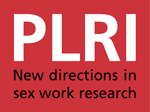Improvements in the evidence base but where is the will to end AIDS?
World AIDS Day provides us with an opportunity for reflection – to remember those who we have lost and to look forward, to consider what still needs to be done if we are to tackle HIV. In terms of scientific advances and political commitment this year has been a very mixed bag. Many of us were delighted when the HPTN 052 study found that antiretroviral treatment prevents the sexual transmission of HIV among heterosexual couples in whom one partner is HIV-infected and the other is not. The study showed a 96 per cent reduction in risk of HIV transmission: A

